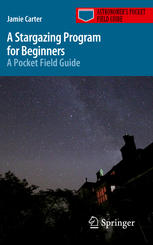

Most ebook files are in PDF format, so you can easily read them using various software such as Foxit Reader or directly on the Google Chrome browser.
Some ebook files are released by publishers in other formats such as .awz, .mobi, .epub, .fb2, etc. You may need to install specific software to read these formats on mobile/PC, such as Calibre.
Please read the tutorial at this link: https://ebookbell.com/faq
We offer FREE conversion to the popular formats you request; however, this may take some time. Therefore, right after payment, please email us, and we will try to provide the service as quickly as possible.
For some exceptional file formats or broken links (if any), please refrain from opening any disputes. Instead, email us first, and we will try to assist within a maximum of 6 hours.
EbookBell Team

0.0
0 reviewsSets out a simple month-by-month program to reveal all of the night sky's biggest and most beautiful secrets in just one year – and with only a few hours of stargazing each month
By investing just an hour a week and $50 in binoculars, it’s possible to learn a few simple techniques and quickly gain a real insight into the night sky's ever-changing patterns – and what they tell us about Earth, the seasons and ourselves. Searching more for a learned appreciation of nature and our exact place within the cosmos than academic scientific knowledge, science and travel writer Jamie Carter takes the reader on a 12 month tour of the night sky's incredible annual rhythms that say so much about Earth. During the journey he learns about the celestial mechanics at work in the skies above that are – to the beginner – almost beyond belief. As well as the vital constellations and clusters, and the weird and wonderful nebulas, he searches out “dark sky destinations” across the globe that help increase knowledge and give a new perspective on familiar night sky sights. On the journey he witnesses a solar eclipse and grapples with star-charts, binoculars, smartphone apps, telescopes, spots satellites and attempts basic astro-photography. By year's end, the reader will be able to glance at the night sky from anywhere on the planet and tell what direction he or she is facing, what time it is, where all the planets are and even where the Galactic Center Point is.